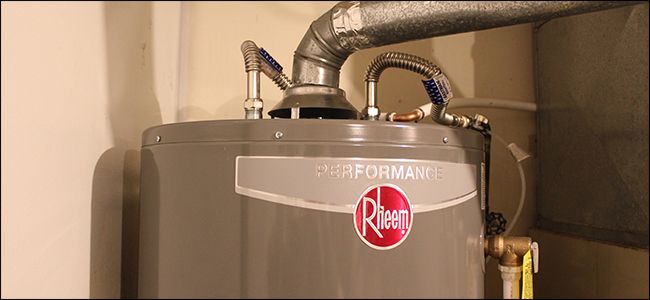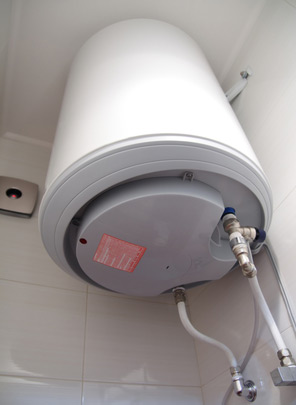This post which follows pertaining to How to Maintain Your Water Heater & Prolong its Life is highly enlightening. Don't bypass it.

Warm water is necessary for day-to-day convenience, whether it's for a revitalizing shower or cleaning recipes. To guarantee your hot water system runs effectively and lasts longer, regular maintenance is key. This article provides practical tips and insights on how to keep your home's warm water system to stay clear of disturbances and pricey repair services.
Introduction
Preserving your home's hot water system could seem challenging, yet with a couple of easy steps, you can guarantee it operates efficiently for several years to find. This overview covers whatever from understanding your warm water system to do it yourself maintenance pointers and knowing when to call specialist assistance.
Significance of Maintaining Your Warm Water System
Normal maintenance not only expands the life expectancy of your hot water system but additionally guarantees it runs effectively. Neglecting upkeep can bring about lowered performance, greater energy bills, and also early failing of the system.
Indications Your Hot Water System Needs Maintenance
Knowing when your warm water system requires interest can avoid major issues. Keep an eye out for indicators such as irregular water temperature, unusual noises from the heating system, or corroded water.
Comprehending Your Hot Water System
Prior to diving into upkeep tasks, it's practical to understand the fundamental parts of your hot water system. Normally, this consists of the water heater itself, pipelines, anode poles, and temperature controls.
Month-to-month Maintenance Tasks
Regular month-to-month checks can assist catch small problems before they intensify.
Flushing the Hot Water Heater
Flushing your hot water heater removes debris buildup, enhancing efficiency and prolonging its life.
Monitoring and Replacing Anode Rods
Anode rods protect against corrosion inside the container. Examining and replacing them when broken is critical.
Examining and Readjusting Temperature Setups
Readjusting the temperature setups ensures ideal efficiency and safety.
DIY Tips for Maintenance
You can do numerous maintenance tasks yourself to keep your warm water system in leading problem.
Checking for Leaks
Frequently check pipelines and links for leakages, as these can lead to water damage and higher expenses.
Checking Pressure Relief Valves
Checking the stress safety valve guarantees it operates appropriately and prevents too much pressure buildup.
Protecting Pipelines
Shielding hot water pipes minimizes warmth loss and can conserve power.
When to Call a Specialist
While do it yourself upkeep is valuable, some concerns call for specialist expertise.
Facility Problems Needing Professional Aid
Instances include major leakages, electric issues, or if your water heater is continually underperforming.
Regular Specialist Maintenance Benefits
Professional maintenance can include complete examinations, tune-ups, and guaranteeing conformity with safety and security criteria.
Final thought
Routine maintenance of your home's hot water system is essential for effectiveness, durability, and expense savings. By following these ideas and understanding when to seek specialist aid, you can make sure a reputable supply of hot water without unanticipated interruptions.
How to Maintain an Instant Hot Water Heater
Before tinkering with your hot water heater, make sure that it’s not powered on. You also have to turn off the main circuit breaker and shut off the main gas line to prevent accidents. Also turn off the water valves connected to your unit to prevent water from flowing into and out of the appliance. 2. When you’re done, you have to detach the purge valves’ caps. These look like the letter “T” and are situated on either side of the water valves. Doing so will release any pressure that has accumulated inside the valves while at the same time avoid hot water from shooting out and burning your skin. 3. When the purge valves’ caps are removed, you have to connect your hosing lines to the valves. Your unit should have come with three hoses but if it didn’t, you can purchase these things from any hardware or home repair shops. You can also get them from retail stores that sell water heating systems. Read the user’s manual and follow it to complete this task properly. When the hosing lines are connected, open the purge port’s valves. 4. You should never use harsh chemical cleaners or solutions when cleaning your unit. Make use of white vinegar instead. It should be undiluted and you’ll probably use about 2 gallons. 5. Now flush your water heater. This task should probably take about 40 minutes. We can’t give you specific directions for this because the procedure is carried out depending on the type, model and brand of your heater. With that being said, refer to the user’s manual. 6. When you’re done draining the unit, you have to turn off the purge port valves again. Remove the hosing lines that you earlier installed on each of the water valves. Put the valve caps (purge port) back in their respective places and be very careful so as not to damage the rubber discs that are found inside these caps. 7. Now that everything’s back in place, check your user’s manual again to find out how to reactivate your water heating system. 8. Once it is working, turn one of your hot water faucets on just to let air pass through the heater’s water supply pipes. Leave the tap on until water flows smoothly out of it. https://www.orrplumbing.com/blog/2014/september/how-to-maintain-an-instant-hot-water-heater/

As a serious reader on What Kind of Maintenance Do Water Heaters Need?, I was thinking sharing that piece of content was smart. Do you know about another person who is curious about the subject? Feel free to promote it. We appreciate your readership.
Schedule An Appointment